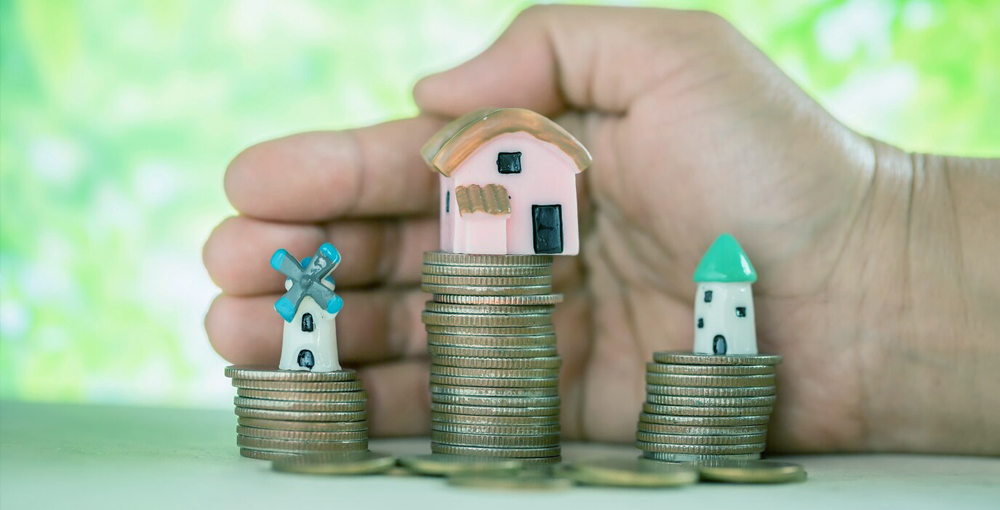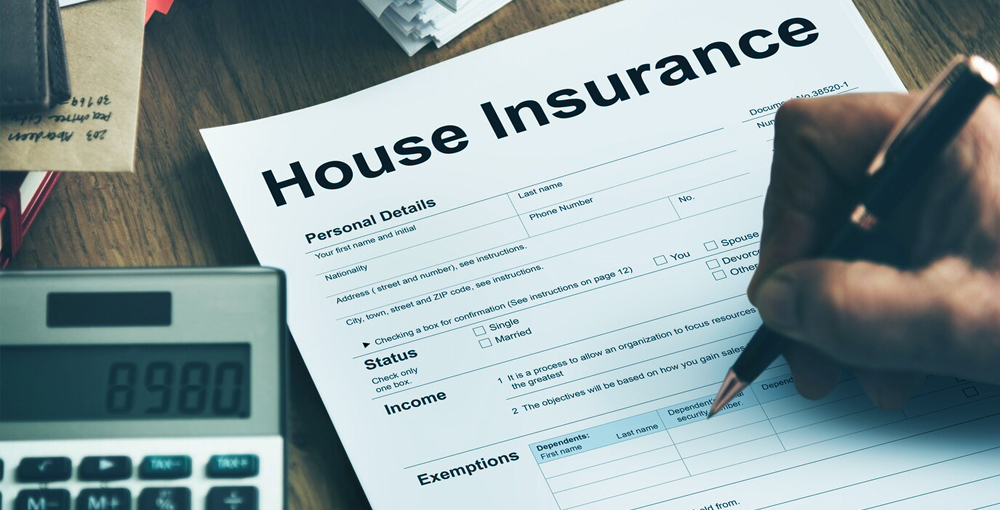Home Insurance Can Protect Your Home from Natural Disasters Before It's Too Late

July 31, 2024
I had this amazing beach house on stilts, my little getaway from the busy city life. But then, things took a turn.
A huge storm showed up out of nowhere. The sky went dark gray, crazy winds shook everything, and rain poured down like it was trying to wash the world away. Those playful waves turned into scary, powerful monsters, slamming into my dream home again and again.
And you know what hit me harder than the storm? The realization that my safety net, my home insurance, might not actually protect me in this mess. The day after the storm, the news confirmed my worries: my lovely coastal spot was now seen as a "high-risk zone" thanks to climate change. Plus, the insurance company said they wouldn't cover natural disasters here anymore.
This blog post isn't just about my personal story. It's about the thousands, the millions of homeowners facing a similar fate. It's about the growing gap between the homes we cherish and the protection we deserve. It's about the fight for a future where climate change doesn't dictate our sense of security.
Why are Insurers Cutting Coverage?
Remember that idyllic beach? It wasn't just the waves that battered my sense of security. It was the cold, hard reality of numbers. For insurance companies, offering coverage in high-risk areas is no longer a sweet beach cocktail, but a bitter financial storm. Here's why:
Climate Change - The Wild Card in the Deck:
Rising costs: Extreme weather events like hurricanes, floods, and wildfires are becoming more frequent and intense. This translates to skyrocketing claims for insurance companies, making covering these areas unsustainable. Imagine a deck stacked with increasingly stormy weather events – each claim another card pulling them closer to bankruptcy.
Unpredictability: Climate change throws a wrench into the carefully calculated risk models insurers rely on. The once-in-a-century flood is now a once-a-decade threat, making it impossible to accurately predict costs and set premiums. It's like playing poker with a shuffled deck, unable to anticipate the next draw.
Shrinking bottom line: With soaring claims and unpredictable risks, offering coverage in high-risk areas becomes a financial tightrope walk. To prevent losses, companies choose to pull out, leaving some homeowners hanging on the edge of a coverage cliff.
Beyond the Headlines - The Numbers Don't Lie:
Hurricane Harvey, a chilling example: Just one storm in 2017 caused $125 billion in insured losses – the costliest hurricane in U.S. history. Multiply that by the increasing frequency of such events, and the picture becomes clear – offering blanket coverage becomes a perilous gamble.
California wildfires: Wildfire losses have quadrupled in the past decade, with 2020 alone witnessing claims exceeding $13 billion. These numbers are a stark reminder of the financial burden on insurance companies and the reason for their retreat.
Flood zones expanding: Rising sea levels and extreme precipitation are expanding flood zones, adding more areas to the "not covered" list. It's like a tidal wave of risk washing over coastal communities, leaving them adrift in a sea of uncertainty.
The Ripple Effect - Beyond Numbers, Human Cost:
These insurance cuts might be mainly about money, but they're hitting people hard. Think about going through a disaster, trying to get back on your feet, and then finding out your insurance won't help you anymore. It's like being left totally exposed, and lots of families are in danger of going broke because of it.

3. What Does This Mean for Homeowners?
When insurance companies stop covering natural disasters, it's like a big wave of not knowing what's going to happen hitting homeowners. But don't worry, we're not alone in feeling this uncertainty. Let's figure this out together and see what it means for you as a homeowner.
Increased Vulnerability:
Exposed to financial ruin: Without coverage for natural disasters, a single storm can wipe out your savings and leave you on the hook for potentially life-altering repair costs. Imagine your dream home, once a symbol of security, transformed into a financial nightmare.
Limited options: Finding alternative insurance in high-risk areas can be a near-impossible feat. Often, the only options come with exorbitant premiums, putting adequate protection out of reach for many homeowners. It's like being stuck on a sinking ship, with the only lifeboats costing a fortune.
Psychological stress: The constant worry about potential disasters and the lack of safety net can take a toll on your mental well-being. Imagine living in constant fear of the next storm, with the security of your home hanging by a thread.
Discrimination and Inequality:
Unequal access to protection: This trend disproportionately affects low-income communities and minorities who are often concentrated in disaster-prone areas. It's like a storm of inequality, leaving vulnerable populations even more exposed to the harsh realities of climate change.
Market failures: The withdrawal of insurers from high-risk zones can lead to market failures, leaving entire communities without adequate coverage.
The need for advocacy: This situation calls for collective action. We need to raise awareness, advocate for fair access to insurance, and demand solutions that protect all homeowners, regardless of their zip code or social standing.
Navigating the Stormy Sea
While the situation is challenging, there are steps you can take to stay afloat:
Review your existing policy: Understand your current coverage and the specific exclusions for natural disasters. Knowledge is your anchor in this storm.
Explore alternative options: Research state-backed insurance programs or private companies specializing in high-risk areas. Every lifeboat counts, even if it's a little rough around the edges.
Mitigation strategies: Invest in preventative measures like storm shutters, flood barriers, and fire-resistant materials. Every sandbag helps reinforce your defenses against the storm.
Remember, you're not alone in this. There are resources and support available to help you weather this storm. By understanding the risks, exploring options, and advocating for change, we can build a more resilient future for our homes and communities.

How Can You Protect Your Home and Finances? Building a Fortress Against the Wind
The winds of change may be howling, but that doesn't mean you have to hunker down in fear. Let's turn the tide and explore practical ways to protect your home and finances from the storm of natural disasters and insurance cuts:
Mitigation - Your First Line of Defense:
Fortify your home: Invest in mitigation strategies like storm shutters, wind-resistant roofing, and flood-proofing measures. These proactive steps can significantly reduce the risk of damage and potentially qualify you for lower insurance premiums.
Embrace fire-smart landscaping: Clear brush, trim overhanging branches, and create firebreaks around your property. Every precaution cuts the fire's path and protects your precious walls from accidental and natural wildfires.
Elevate vulnerable structures: If you live in a flood-prone area, consider raising your electrical panel, appliances, and living quarters above the potential flood level. Every inch higher is a victory over the rising tide.
Prepare an emergency kit: Stock up on non-perishable food, water, first-aid supplies, and essentials like batteries and a radio. Be your own lighthouse in the darkness of power outages.
Insurance - Your Safety Net:
Shop around: Don't settle for the first insurance you find. Compare rates and coverage options from different providers, including state-backed programs and specialized high-risk insurers. Think of it as exploring different routes to safety, ensuring you find the sturdiest bridge to cross the stormy waters.
Understand your policy: Take the time to thoroughly read and understand your insurance policy. Know what's covered, what's excluded, and your deductible amounts. This knowledge is your shield, protecting you from unexpected surprises when the storm hits.
Raise your voice: Advocate for fair and affordable insurance options in your community. Join local groups, contact your elected officials, and raise awareness about the challenges faced by homeowners in high-risk areas. Remember, a united front is a powerful storm against injustice.
Community and Advocacy - Collective Strength:
Connect with your local government: Stay informed about mitigation programs, evacuation plans, and disaster preparedness resources. Together, you're a united front against the storm.
Join community groups: Collaborate with neighbors to share resources, develop evacuation plans, and advocate for fair access to insurance in your area. Every voice adds strength to the wind, pushing for change.
Support policies promoting climate resilience: Lobby for legislation that incentivizes mitigation efforts, strengthens building codes, and expands affordable insurance options. Be the wind of change, shaping a more secure future for all.
Keeping your home and money safe isn't something you do once and forget about. It's a constant thing. If you stay updated, take action before things get bad, and team up with your neighbors, you can make your home stronger against the crazy storms caused by our changing world.
More Insurance Guidance for You:
She's the One (But Will Your Insurance Agree?) The Dos & Don'ts of Adding Your GF to Your Plan

The Future of Home Insurance and Natural Disasters
While the current landscape of home insurance and natural disasters might seem bleak, it's not a story without hope. We need to change how we do things, find new ways to deal with these big problems. Here's a peek at some possible ways to fix things in the future.
Shifting Paradigms:
Rethinking risk models: Insurance companies are exploring ways to adapt their risk models to the realities of climate change. This could involve incorporating real-time data, predictive analytics, and location-specific factors to build more accurate and equitable pricing models.
Parametric insurance: This innovative approach pays claims based on pre-determined triggers like wind speed, rainfall, or earthquake intensity, eliminating the need for traditional claim adjusters. Think of it as an automatic lighthouse, guiding you towards compensation without navigating the fog of bureaucracy.
Public-private partnerships: Collaboration between governments, insurers, and communities can lead to proactive mitigation strategies, early warning systems, and affordable insurance options in high-risk areas. Imagine a united fleet of ships, working together to weather the storm.
Resiliency, the Building Block of the Future:
Community-based solutions: Local initiatives like neighborhood disaster preparedness plans, shared resources, and mutual aid networks can build social resilience and support vulnerable communities.
Sustainable rebuilding: Prioritizing green building materials, renewable energy sources, and flood-resistant infrastructure can create more resilient homes and communities in the long run.
Individual responsibility: As homeowners, we can all play a part by choosing sustainable practices, reducing our environmental footprint, and advocating for climate-friendly policies. Every drop makes a difference in calming the stormy seas.
Weathering the Storm Together
The waves of climate change may be crashing against our shores, but we don't have to surrender to the tide. By understanding the challenges of home insurance cuts, taking proactive steps to protect our homes and finances, and advocating for a more resilient future, we can weather any storm.
This journey isn't just about securing individual homes; it's about building a future where every community, regardless of location or income, can thrive in the face of natural disasters. We need to raise awareness, demand innovative solutions, and hold our leaders accountable for creating a world where homeownership isn't a gamble against the elements.
So, what are you waiting for? Join the conversation! Let's share our experiences, ideas, and resources in the comments below. Share this post with your friends, family, and neighbors. Let's make the winds of change blow in the direction of a more secure and sustainable future for all.
